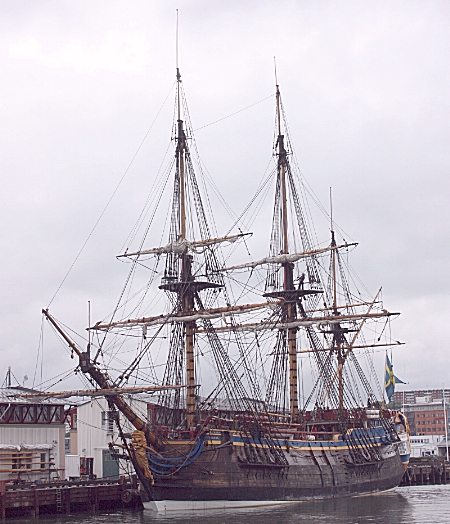
|
Q: "How was it really - sailing?"
Nothing teaches better than reality itself:)
In summer 2009, I had the luck and the honor to sail with the Swedish replica Götheborg III of the SOIC,
for one week.
I was one of 52 crew trainees, sailing from Gothenburg, Sweden to Arendal, Norway.
And so my life dream became true eventually :)
The Götheborg is an East India Man, and is regarded the worlds best replica ever built
(as being said by a sailmaker who had also been onboard the "Endeavour" replica, which is a little smaller).
The rigging of the Götheborg is fully operable and historically correct.
The reconstruction took place between 1995 and 2005. Then, with a crew of 80, this ship sailed(!) to China(!)
and back, a journey of a whole year, and prooving that she is REALLY seaworthy!
She may look really old from outside, but she is
"two ships in one", all mandatory maritime safety installations are in place, but hidden under deck.
She has in fact two propellers on auxiliary engines - very useful when going right against the wind :)
On my time onboard, I wanted to know about everything.
I went aloft (and had to see that I am almost too old and too fat for this ...), and I made 3600 pictures ...
You think that is crazy? Not at all - when would I ever have a chance again ...
|
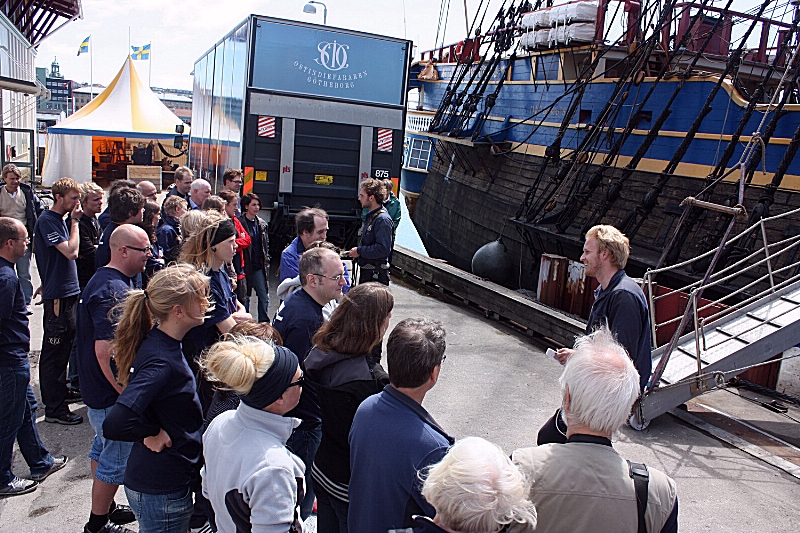
June 2009, on the quai Eriksberg, Gothenburg, Sweden: we were 52 wanna-be sailors:
most were absolute beginners like me, men and women, of any age.
Of course most of them were Swedish, adding 1 U.S.American, 2 Norwegians, 1 Danish, and 1 German - my little lot :)
The language onboard and all commandos were given in Swedish on our turn. But on other occasions, when too many foreign sailors
are onboard, English is used, too.
We were trained by 20 permanent crew members ... here we meet our watch leaders for the first time.
The SOIC accepts everybody to sail with the Götheborg III, as long as You are physically capable
and willing to learn the rigging and work as a crew member. All "landlubbers" at sea receive a training for going aloft.
In fact, without the 52 trainees for every trip, this huge ship could not be handled or sailed properly by the base crew of 20.
Because everything is done only by the hands, like in the ancient times :)
My watches were from 04-08 and 16-20, we were the "midship´s watch". Each watch consisted of 20 people. The other two watches are the "starboard´s watch"
and the "port´s watch". So around the clock, the ship is manned.
The atmosphere was great! To be onboard with so many different people in a "tiny" ship like this is an experience for your lifetime!
During our time, we actually were back in the 17th century: we had no tv, no radio, no internet, no telephone, just the ship (except the
permanent crew using modern navigation equipment of course). So many new impressions and experiences.
So many people working together. And on official occasions, we were wearing ancient styled sailor clothes!
Although I already knew from my ship modelling hobby what a "topgallant brace" was,
I still learned many things. In the free watch time, when
my hand was not needed, I took my camera to study all details of the rigging. So I went aloft ...
|
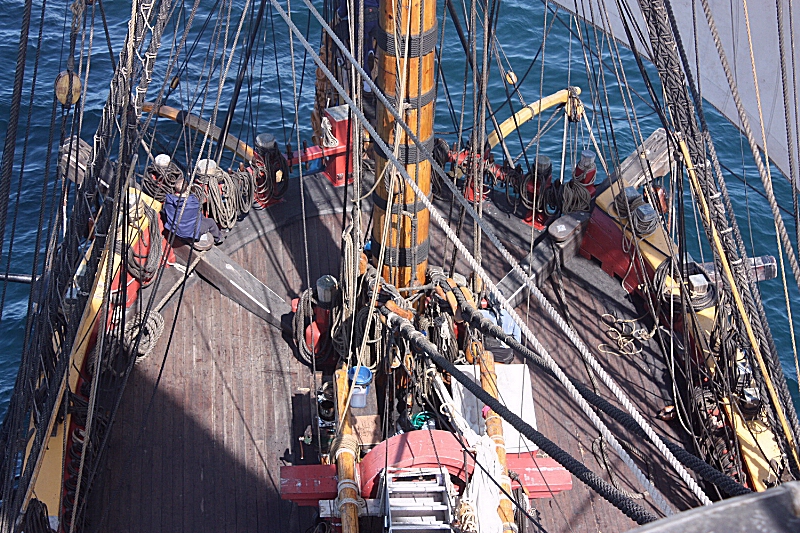
The fore deck (it is almost a flush deck) how it looks like REALLY, as seen from the main top
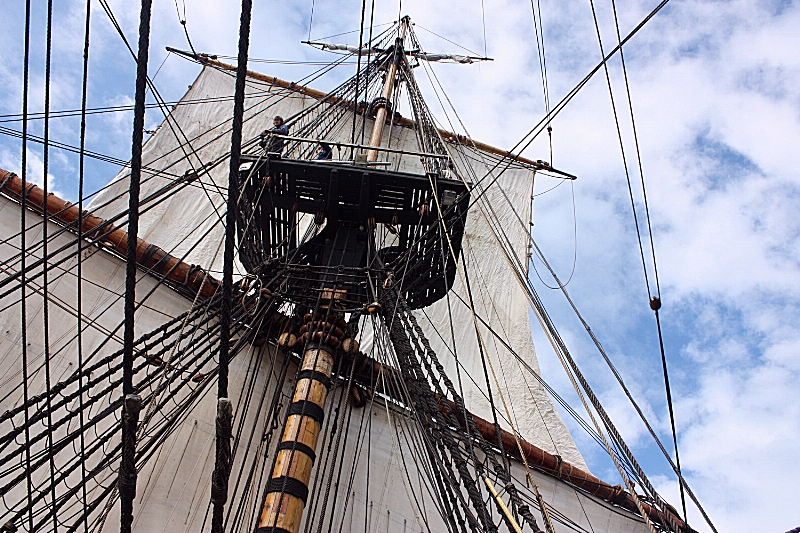
The fore top: the course and topsail are set, the topgallant is still furled
|
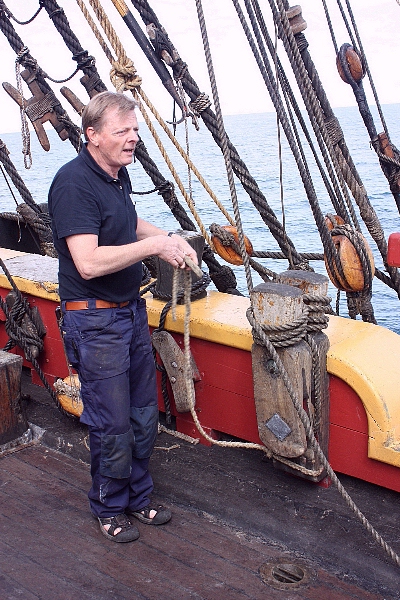
Björn Ahlander, the rigging master of the Götheborg, explains every detail.
This is the fore topsail halyard, which is symmetric on port and starboard.
|
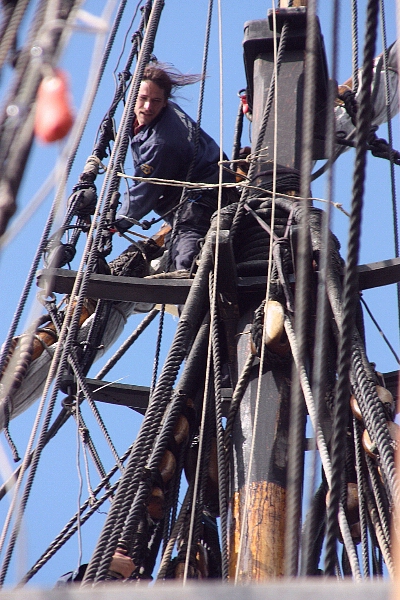
Woody in action! Here he is fixing the main topgallant yard
Woody is a true sailorman! He came from America to sail with us ... I guess there are only a handful of men like him on this planet.
|
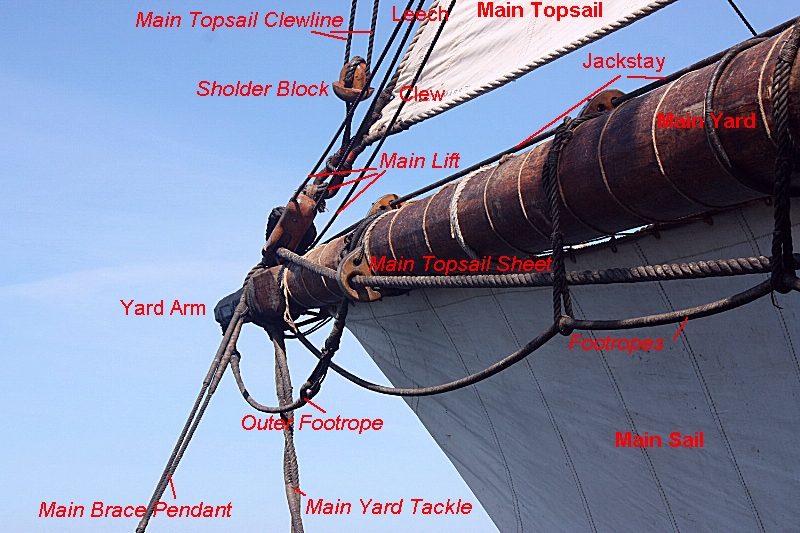
A detail from the main yard arm, showing the sheets lead and the foot ropes
Going aloft did not make me dizzy, I just had to see how old and how fat I had become ...
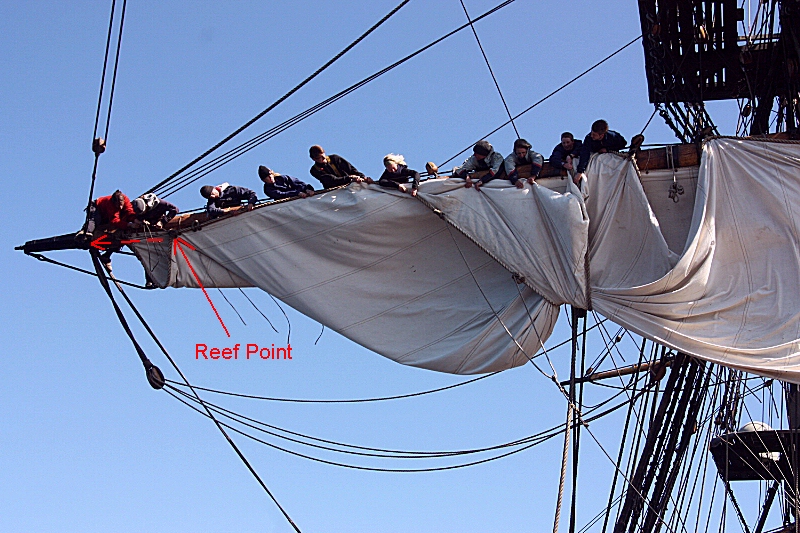
10(!) sailors stand in the footropes and haul out the reefing point of the main course´ leach - it is hard work that needs all hands!
Woody (the most outer man in red) actually sits on the yard arm!
Do not guess wrong about this fine blue sky - before the coast of Norway, winds can be very strong though,
and our fore course was blown to tatters - I had the strange "luck" having duty
as a look-out post on the sundeck, and so I could make this picture!
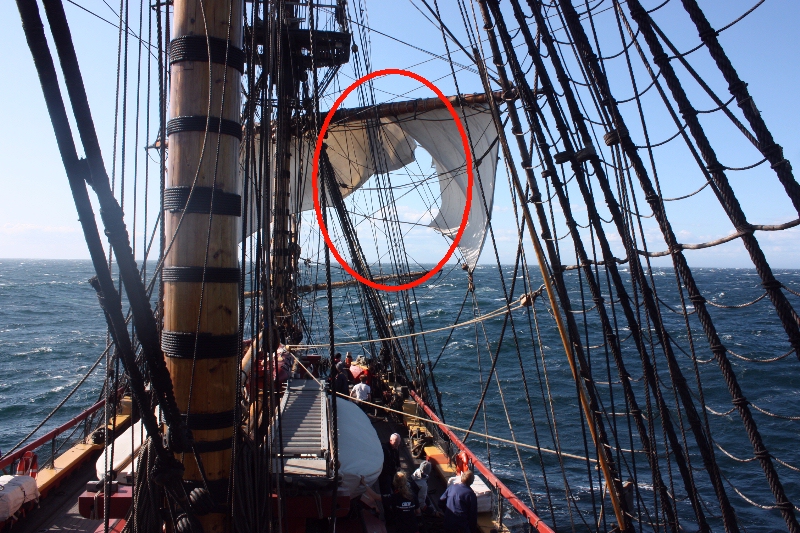
|
That was quite dramatic: the giant fore course, almost 200 square meters, blew up within 3 seconds!
Immediately, everybody jumped to the spot - they had to act fast,
and cast the starboard sheet and clew up with caution for sail flaging,
and the entire watch
went aloft to furl the starboard side of the sail - or that what was left over ... our sailmaker was "not amused".
That was the hard way to learn not to set sails in too strong winds.
Then we continued sailing to Arendal harbor in a very choppy sea,
only with the remaining half fore course on portside and a staysail, all other sails were bent ...
in the following watch, I and another seaman had to stand at the helm under these conditions,
and is was very difficult indeed to hold 120 degrees heading!
In fact, a single 5 meter wave could shake us around to 100 or 140 degrees...
These are the things that happen at sea ... sometimes it is "All hands on deck!"
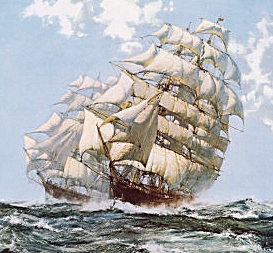
|
That event prooved what I had in mind long ago: if the strongest sails of the old ships - the courses - can be blown away like this,
when we still had no real storm, the much more weak studdings sails could never have been handled at all under these conditions, no way!
Montague Dawson´s famous painting "Taeping and Ariel race" is still magnificant, but it cannot be true. Both ships list over 30 degrees,
that is quite a lot and indicates a strong breeze, or near gale on the Beaufort scale - we had the same before Norway, and the same choppy sea.
We had almost all our sails
furled, and these clippers shown here are twice as big and tall as we were! Having set all canvas, including studding sails, under these conditions is at least very douptful ...
|
|
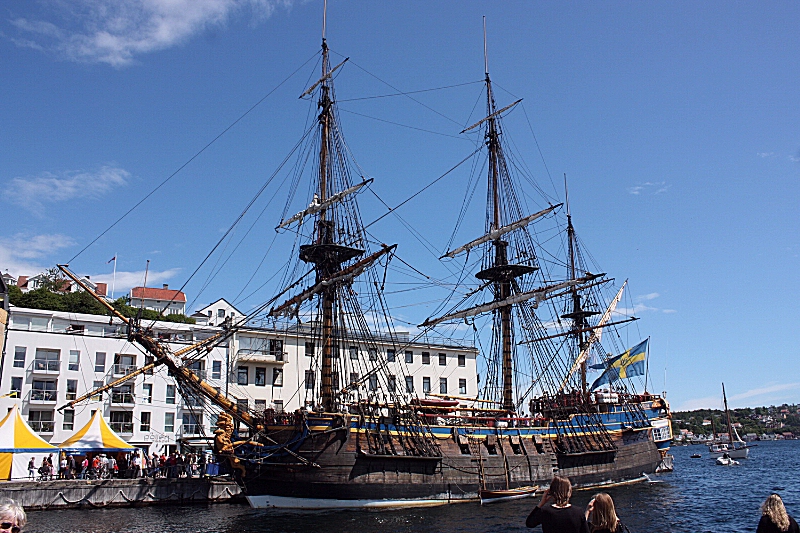
But finally, we made it to Arendal, though :)
And back to my
old question:
how are belaying points arranged on the old ships?
This is the scheme of the Götheborg III:
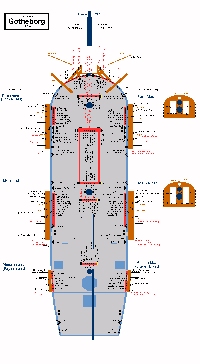
The belayings here in Swedish and English
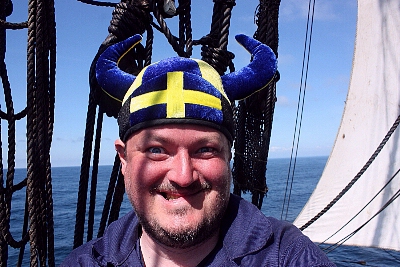
After 30 years of waiting, my life dream had come true!
|












